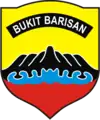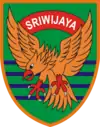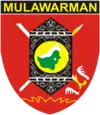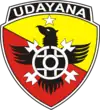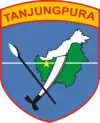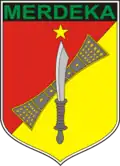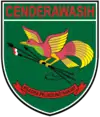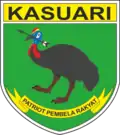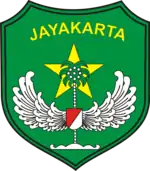Regional Military Command
The Indonesian Regional Military Commands (Indonesian: Komando Daerah Militer, or Kodam) are Indonesian military districts.

History
The Armed Forces' military regions are known as Kodam. Their organization was established by General Sudirman, following the model of the German Wehrkreise system. The system was later codified in Surat Perintah Siasat No.1, signed by General Sudirman in November 1948.
The Army's structure underwent various reorganisations throughout its early years. From 1946 to 1952, the Army was organized into combined arms divisions. These were consolidated in 1951, and then dissolved in 1952. From 1952 to 1958-59, the Army was organised into seven Territorial Armies (Tentara & Teritorium) composed of regiments and independent formations at battalion level and below. In August 1958, the Indonesian Army reconsolidated its territorial organization. This created sixteen regional commands, which retained earlier divisional titles; the Siliwangi Division, for example, became Kodam VI/Siliwangi.[1] The Kodam were subdivided administratively into Areas (the former territorial regiments), Districts (the former regimental battalions) and District Sectors, and operationally composed of a number of speciality battalions and in some regional commands, an infantry brigade.
A reorganisation in 1985 made significant changes in the army chain of command. The four multiservice Regional Defence Commands (Kowilhan) and the National Strategic Forces Command (Kostranas) were eliminated from the defence structure, re-establishing the Regional Military Commands (Kodam) as the key organisation for strategic, tactical, and territorial operations for all services. The 16 regions were reduced to just 9.[2] The chain of command flowed directly from the ABRI commander in chief via the Chief of Staff of the Army to the ten territorial commanders, and then to subordinate army territorial commands. In 1999, the number of regions grew to 10, and today, there are around 15 in active operation.
The territorial commands incorporate provincial and district commands each with infantry battalions, sometimes a cavalry battalion, artillery, or engineers. The number of activated infantry brigades is increasing.[3] Some have Raider battalions attached.
Organization of Regional Commands
Each Regional Command is led by a general officer of Major General rank, assisted by a Chief of Staff, a billet of a Brigadier General. These are subdivided into the following territorial formations:
- KOREM: Military Area Command (Covering large areas or residencies) - further divided into 2 type, A and B, commanded by a Brigadier General and Colonel respectively
- KODIM: Military District Command (City or Regency level) - further divided, into 3 type, independent, A and B, commanded by a Colonel, Lieutenant Colonel and Major respectively.
- KORAMIL: Military District Command Sector (Kecamatan level) - further divided into 2 type, A and B, commanded by a Major and Captain respectively.
- BABINSA: Village Subsector Command (lit. Village Trustees Officer) (Desa/Keluhuran level) - usually Babinsa are Senior Bintara or Non-commissioned Officer although there are also senior Enlisted men.
In addition, each of the Kodam has a Regional Training Regiment is also present in for the training and education of enlisted personnel and non-commissioned officers in their area of operations.
The office of the Regional Commander is assisted by the following territorial departments:
- Office of the Regional Inspector General (Itdam)
- Office of the Regional Secretariat (Setumdam)
- Regional Military Police Command (Pomdam) - responsible for military police affairs
- Regional Public Affairs and Press Office (Pendam) - responsible for public affairs, media and civil-military relations
- Office of the Regional Adjutant General (Ajendam)
- Regional Military Physical Fitness and Sports Office (Jasdam) - responsible for physical fitness and sports affairs
- Regional Medical Department (Kesdam) - responsible for medical affairs
- Regional Veterans and National Reserves Administration (Babiminvetcadam) - responsible for military reserves formation and veterans' affairs
- Regional Topography Service (Topdam)
- Regional Chaplaincy Corps (Bintaldam) - chaplaincy service for personnel who are Muslims, Christians, Hindus, Buddhists and Confucianists
- Regional Finance Office (Kudam) - responsible for financial activities
- Regional Legal Affairs Office (Kumdam)
- Regional HQ and HQ Services Detachment (Detasemen Makodam)
- Regional C3 Unit (Puskodalops Kodam)
- Regional Information and Communications Technology Office (Infolahtadam)
- Regional Logistics and Transportation Division (Bekangdam)
- Regional Signals Division (Hubdam)
- Regional Ordnance Department (Paldam)
- Regional Engineering Division (Zidam)
- Regional Cyber Operations Service (Sandidam)
- Regional Intelligence Command (Deninteldam)
- Liaison offices of the Navy and Air Force formations in each Military Region
Operationally, each Kodam is organized as a territorial infantry division with the following organization:
- Infantry Brigade
- directly reporting independent Infantry battalions (including Raider Infantry)
- independent Infantry battalions which are part of Military Areas
- Cavalry Squadron and/or Cavalry Reconnaissance Troop (Separate)
- Field Artillery Battalion/s
- Air Defense Artillery Battalions/Detachments
- Combat Engineers Battalion/s
- Construction Engineers Battalions/Detachments
Military Regions
The following is a list of Regional Military Commands in Indonesia:
Former Military Regions
| No | Name | Coat of Arms | Former Defense area | Headquarters |
|---|---|---|---|---|
| 1. | Kodam III/17 Agustus |  | ||
| 2. | Kodam VII/Wirabuana |  | ||
| 3. | Kodam X/Lambung Mangkurat | |||
| 4. | Kodam XI/Tambun Bungai | |||
References
- Ken Conboy, Kopassus: Inside Indonesia's Special Forces, Equinox Publishing, Jakarta/Singapore, 2003, p.79
- Library of Congress Country Study, Indonesia, November 1992, Organization of the Armed Forces
- The Military Balance 2006, International Institute for Strategic Studies
